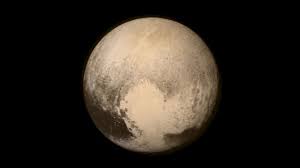Overview
On July 14, 2015, the New Horizons probe flew past Pluto in its closest approach, over 7700 miles or 12,500 km from the dwarf planet. From the time it was launched in January 2006, it has flown an incredible 3 billion miles from Earth. The distance is so far away that pictures and messages from the spacecraft take more than 4 hours to reach scientists. Much of the data from the probe will take months to process. Telemetry was received from the probe at about 9 PM EDT, showing that it was not damaged in the flyby.
The Flyby
Photographs taken of Pluto and its moons Charon, Nix, Hydra, Styx, and Kerberos show an incredible amount of detail, and those are just the ones that have been seen during New Horizons’ approach to Pluto. During the time immediately after the flyby at 7:49 EDT, all cameras and other devices on the probe were so busy that antennas were not turned in the right direction to send a message back. In order to capture all the features of the planetary system, cameras on the probe had to twist and turn many different ways.
The Probe Itself
The New Horizons probe is about the size of a baby grand piano, traveling through space at more than 13 km/second. It is the fastest spacecraft ever launched, and got an extra boost from the planet Jupiter as it flew by the giant planet. It has seven different types of instruments. Three of them are optical: a long-range camera LORRI, an ultraviolet spectrometer ALICE, and a telescope RALPH. Plasma sensors SWAP (Solar Wind at Pluto) and PEPSSI (Pluto Energetic Particle Spectrometer Science Investigation) are joined by the SDC (Student Dust Counter), built by students at the University of Colorado at Boulder, and REX, the Radio Science Experiment. A very detailed itinerary of exactly which instruments are operating can be found on the NASA New Horizons website.
New Information
The size of Pluto has been revised from information sent back. At 2370 km, it is larger than the next largest Kuiper Belt Object (KBO), Eris. It has a polar ice cap made of methane ice, different than the ices at the equator. Pluto also has a thin atmosphere of nitrogen that is larger than scientists thought it would be. As the probe traveled closer to Pluto, features such as a heart-shaped patch probably made of methane, nitrogen, and carbon monoxide snow could be clearly seen. Pluto’s largest moon Charon is over half its size, at 1,208 km. It has huge chasms and craters. Pluto and Charon orbit around a common center of gravity, and the other moons orbit Pluto and Charon.
After Pluto, What’s Next?
After the Pluto flyby, NASA scientists hope to extend the mission to other objects within the Kuiper Belt. There are two nearby objects that it will take until 2019 to reach. The radioactive power source, powered by plutonium, is projected to last until the 2030s, when the battery will have decayed so much it will no longer be able to transmit data.
Interested in science tutoring services? Learn more about how we are assisting thousands of students each academic year.
SchoolTutoring Academy is the premier educational services company for K-12 and college students. We offer tutoring programs for students in K-12, AP classes, and college. To learn more about how we help parents and students in Baton Rouge, LA: visit Tutoring in Baton Rouge, LA





